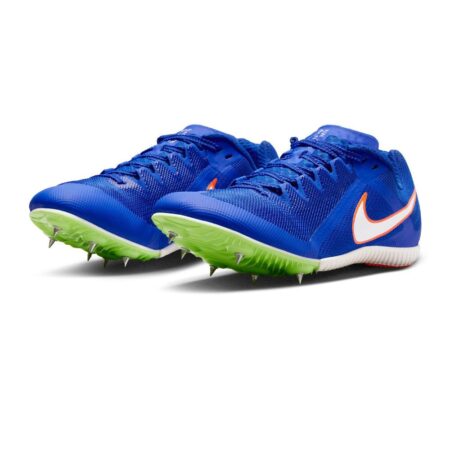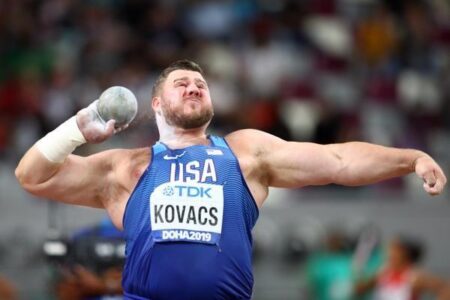The journey to Olympic greatness is marked by relentless dedication, blistering speed, and moments of sheer athletic brilliance. On “Road to Glory – Athletics – The Sprinters,” Olympics.com delves into the captivating world of the fastest athletes on the planet, chronicling their pursuit of gold on the world’s biggest stage. From emerging talents to established champions, this feature highlights the stories, training regimens, and fierce competitions that define sprinting at the Olympic Games. As the sprinting event continues to electrify fans worldwide, Olympics.com brings viewers closer to the athletes whose speed and determination embody the true spirit of the Olympics.
Road to Glory Athletics The Sprinters Unveiling the Secrets Behind Elite Sprint Performance
Elite sprinters combine explosive power with impeccable technique to dominate the track. Behind every iconic performance lies a meticulous training regimen, where milliseconds are shaved off through intense focus on start reaction time, stride length, and frequency. Nutrition, recovery, and mental resilience form the triad supporting peak sprinting form, pushing athletes beyond natural limits. Across the globe, innovators in sports science use biomechanics and data analytics to fine-tune every aspect of an athlete’s movement, transforming raw talent into Olympic gold-worthy performances.
Key elements contributing to record-breaking sprint times include:
- Start Technique: Optimizing block positioning and explosive launch mechanics.
- Strength Training: Focusing on fast-twitch muscle fibers for rapid force production.
- Speed Endurance: Sustaining velocity throughout the 100m and 200m sprints.
- Mental Preparation: Visualization and concentration techniques for race day execution.
| Aspect | Elite Benchmark | Training Focus |
|---|---|---|
| Reaction Time | ~0.13 seconds | Start drills, auditory cues |
| Stride Length | 2.5 meters | Flexibility, powerful hip extension |
| Stride Frequency | ~4.5 strides/sec | Neuromuscular training |
| Max Velocity | 44 km/h | Acceleration mechanics |
Training Techniques That Propel Olympic Sprinters to Victory
Explosive start drills and resistance training form the backbone of an Olympic sprinter’s regimen. Athletes dedicate countless hours to perfecting their reaction times off the blocks, employing sled pushes and weighted sprints to build the necessary power to accelerate rapidly. Complementing these efforts, plyometric exercises sharpen neuromuscular coordination, allowing sprinters to maximize stride frequency and length when every millisecond counts.
Nutrition and recovery are integral elements woven seamlessly into the training schedule. Precision timing of protein intake, hydration strategies, and advanced recovery methods like cryotherapy and compression suits enhance muscle repair and reduce fatigue. Below is a snapshot of weekly training focuses that typify a champion sprinter’s cycle:
| Day | Primary Focus | Key Activity |
|---|---|---|
| Monday | Acceleration | Starting block drills & sled sprints |
| Wednesday | Speed Endurance | 400m repeats at 90% effort |
| Friday | Strength | Olympic lifts & plyometrics |
| Sunday | Recovery | Hydrotherapy & stretching |
Nutrition and Recovery Strategies Essential for Peak Sprinting Success
Optimal nutrition fuels elite sprint performance by providing the precise balance of macronutrients and micronutrients essential for explosive power and rapid recovery. Sprinters benefit from a diet rich in complex carbohydrates to replenish glycogen stores, paired with high-quality proteins that support muscle repair and growth. Incorporating nutrient-dense foods such as lean meats, leafy greens, and antioxidant-rich berries aids in reducing inflammation and oxidative stress following intense training sessions. Hydration also plays a critical role, as electrolyte balance maintains muscle function and prevents cramps during both practice and competition.
Recovery strategies are equally vital, encompassing both physical and mental aspects to ensure consistent peak output. Techniques like active recovery, including dynamic stretching and low-intensity cycling, help flush out metabolic waste while promoting blood flow. Additionally, methods such as contrast hydrotherapy and compression garments accelerate tissue repair and reduce soreness. Mental recovery, through guided visualization and mindfulness practices, enhances focus and resilience. The table below summarizes key nutritional components and recovery tactics tailored for sprinters:
| Focus Area | Key Elements | Benefits |
|---|---|---|
| Nutrition | Complex carbs, Protein, Antioxidants, Electrolytes | Energy replenishment, Muscle repair, Reduced inflammation |
| Physical Recovery | Active recovery, Hydrotherapy, Compression | Improved blood flow, Faster tissue repair, Reduced soreness |
| Mental Recovery | Visualization, Mindfulness, Relaxation | Enhanced focus, Stress reduction, Increased resilience |
In Retrospect
As the world’s fastest athletes continue to push the limits of human speed, “Road to Glory – Athletics – The Sprinters” on Olympics.com offers an in-depth look at the dedication, discipline, and determination that define the sport. From rising stars to established champions, the journey to Olympic glory is as thrilling as the races themselves. Stay tuned to Olympics.com for the latest updates and stories that celebrate the spirit of sprinting on the global stage.





